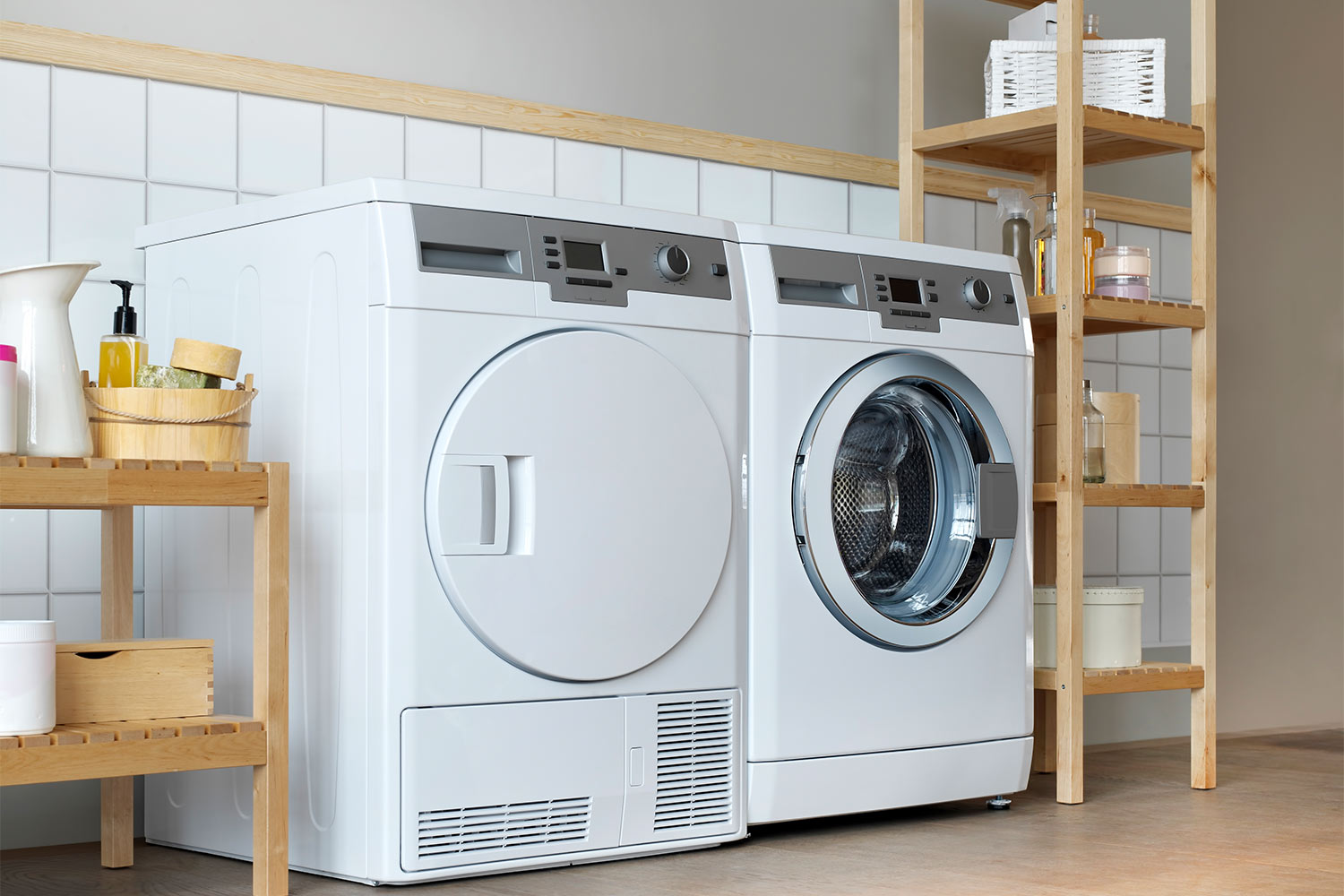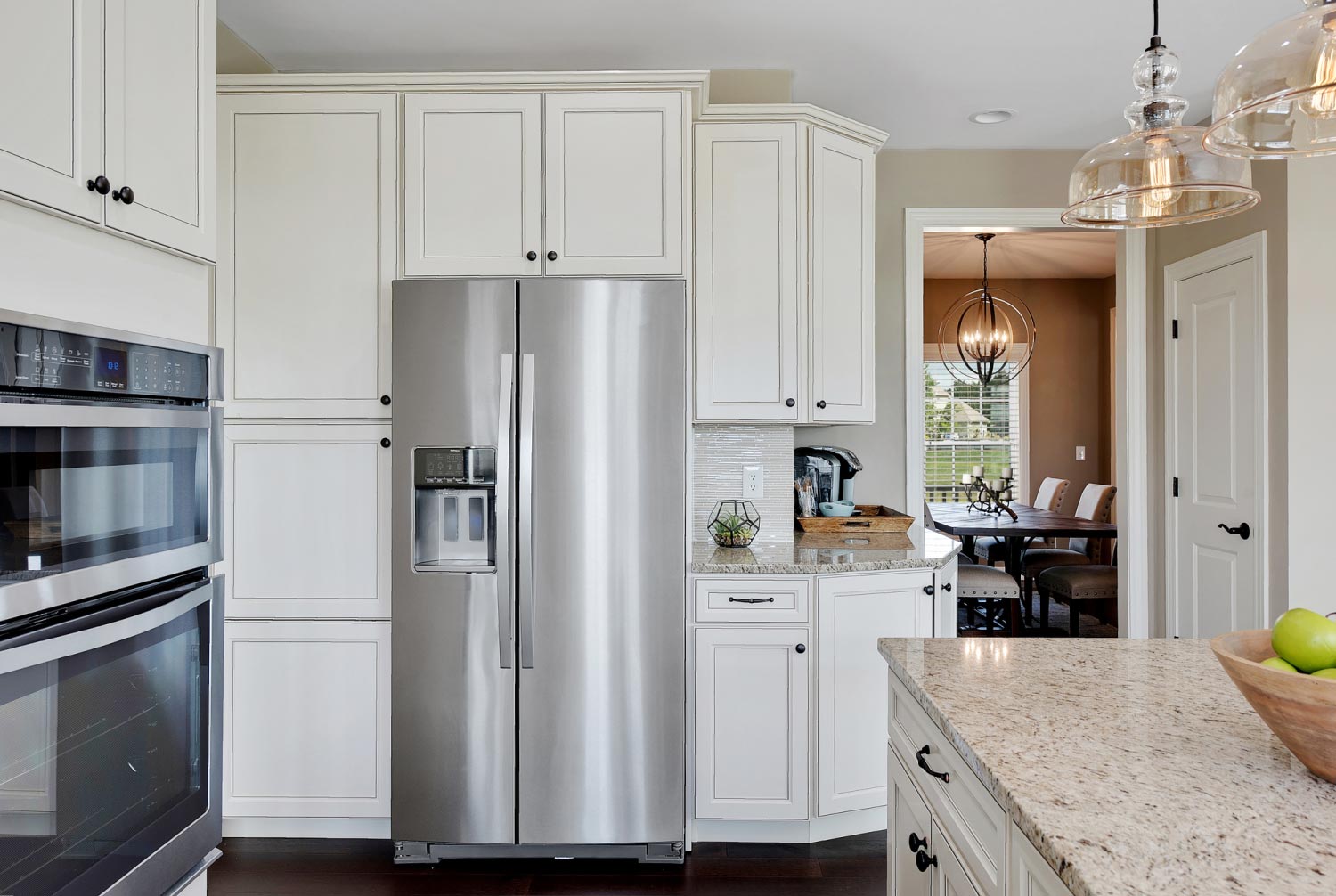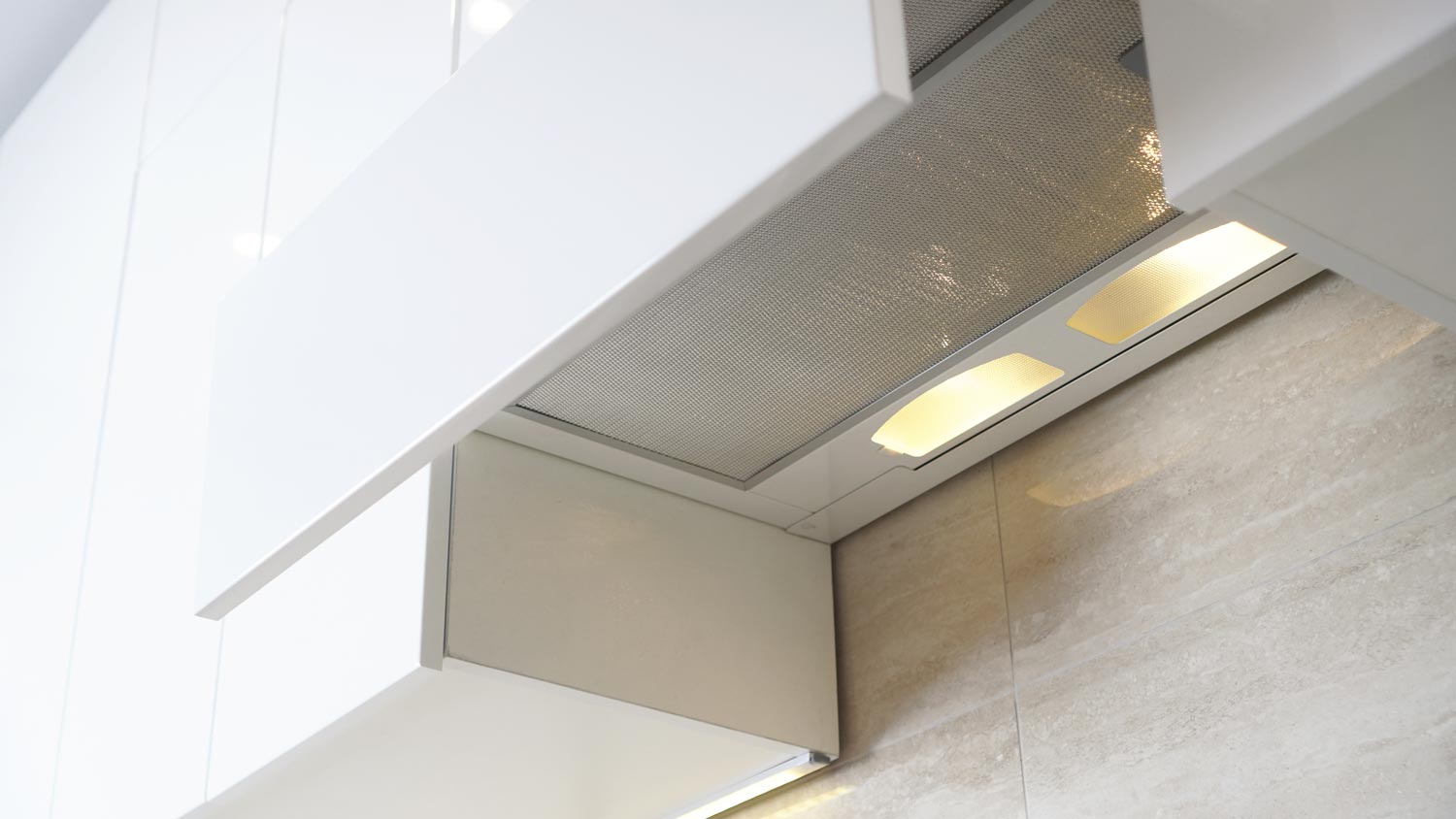
Budget for microwave repair costs based on factors such as parts, what the issue is, microwave type, professional labor, and more.
The average cost to install a dishwasher is about $1,200, which largely depends on the price of the appliance itself.


Installing a dishwasher costs an average of $1,200, with most homeowners spending between $1,000 and $1,500.
Retrofitting a kitchen to accommodate a new dishwasher can increase the cost range from $1,200 to $3,200.
The cost of a dishwasher unit depends on the quality, type, size, and brand.
Additional costs may include customization, plumbing, electrical work, remodeling, and other factors that increase total costs.
This article was updated using automation technology and thoroughly reviewed for accuracy by HomeAdvisor Editor Ryan Noonan.
The cost to install a dishwasher in your home can range between $1,000 and $1,500, with an average cost of $1,200. Depending on the type of dishwasher you choose and whether your kitchen needs modifications, you could pay as little as $150 or as much as $3,600.
The cost of a dishwasher and installation varies significantly depending on the type, brand, size, and other factors.
When shopping for a dishwasher, you'll find they come in three price tiers: economy, mid-range, and luxury models. While all dishwashers handle basic tasks like washing and drying your dishes, spending more usually gets you better performance and advanced features.
| Dishwasher Tier | Low Cost | High Cost |
|---|---|---|
| Economy | $250 | $800 |
| Mid-range | $900 | $1,200 |
| Luxury | $1,500 | $3,500+ |
If you're looking for a basic dishwasher without breaking the bank, economy models cost between $250 and $800. These budget-friendly options handle standard washing and drying but typically have fewer cycles and features than pricier models. Common features of economy dishwashers include:
Front panel controls
Less insulation and higher noise level
Low durability/limited warranty options
Plastic interior tub
Minimal rack adjustments
Limited energy efficiency
Mid-range dishwashers, costing between $900 and $1,200, strike a balance between price and features. They offer reliable performance, energy efficiency, and durability without the high-end price tag. Often featuring better insulation and stainless steel tubs, these models reduce noise and resist odors and stains. Higher-end mid-range models might include extra features like:
Front or top controls
Standard capacity
Adjustable rack
Smart features and Wi-Fi connectivity
Adjustable or extra racks
Sanitize functions
Multiple drying options
If you're willing to splurge, luxury dishwashers start at $1,500 and can go over $3,500. While they might not wash or dry dishes better than mid-range models, they come packed with high-end features and technology. Expect ultra-quiet operation, smart home compatibility, and top-notch water and energy efficiency. Luxury models often include features like:
Hidden control panels
Interior lighting
Multiple cycle options: wash, sensor dry, steam clean, and sanitize functions
Specialized cycles for delicate or sensitive dishes and cookware
Customized finishes
Dishwasher prices depend on the type of dishwasher you choose. For example, countertop dishwashers can cost as little as $250, while fully integrated dishwashers can cost as much as $3,000.
| Dishwasher Type | Cost |
|---|---|
| Built-in | $350–$1,600 |
| Integrated | $630–$3,000 |
| Drawer | $750–$2,000 |
| Countertop | $250–$400 |
| Portable | $300–$750 |
Built-in dishwashers are the most common type found in homes and cost between $350 and $1,600. Generally featuring two racks and standard dimensions, they give your kitchen a cohesive look.
Integrated dishwashers, which range from $630 to $3,000, have a similar design to built-ins. However, integrated models go a step further by blending in with the surrounding cabinetry when closed. This seamless look usually requires a prefabricated kitchen design or additional customization, reflected in the high price point.
Drawer dishwashers average $750 to $2,000. A modern design with growing popularity, drawer dishwashers usually feature two stacked drawers and one rack per drawer, which slide out instead of hinging downward.
Countertop dishwashers average $250 to $400. Since they draw water from your kitchen faucet and don’t require rough-in plumbing, countertop models are relatively easy to install. They don’t technically have to be on the counter, but they must be near your sink and connected to a GFCI outlet. While easily packed up and moved, countertop models have limited capacity.
Portable dishwashers cost $300 to $750. These freestanding dishwashers have wheels for easy transportation and don’t require plumbing installation since they connect to the sink. While convenient, they typically have limited capacity and features.
Dishwashers are available in different sizes to accommodate various spaces, and size has a direct impact on the installation process and requirements. For instance, replacing an existing dishwasher with a model featuring the same dimensions has minimal impact on costs, but adding a bigger or smaller unit may require modifying cabinetry.
In most cases, smaller sizes carry the fewest features and lowest costs, around $250 to $300. In contrast, large sizes often correlate with more high-end makes and models, costing between $450 and $1,800.
Here are the features you can expect from different sizes:
Small: Compact and portable, ideal for rentals or small spaces. Limited capacity.
Slimline: Compact, suitable for small households and kitchens. Less capacity than standard. Typically less water or energy-efficient than other sizes.
Standard: Most common size, with a capacity that handles up to 12 place settings. Fits under standard countertops.
Large: Suitable for large households and handles up to 16 place settings. Dual motor design.
| Size | Dimensions (Inches) | Unit Cost |
|---|---|---|
| Small | 19 H x 18 W x 17 D | $250–$300 |
| Slimline | 34 H x 18 W x 24 D | $300–$1,050 |
| Standard | 34 H x 24 W x 24 D | $350–$1,600 |
| Large | 34 H x 30–42 W x 24 D | $450–$1,800 |
Dishwasher brands vary widely in price, which is often reflected in the dishwasher’s quality, features, reliability, and design. Affordable brands such as Whirlpool and Frigidaire carry models ranging from $330 to $990, aiming for essential function and reliability. Brands with top-end prices may offer superior performance, extended warranties, and luxury features, but sometimes require specialized installation, repairs, and maintenance that add costs over time.
Keep in mind that brand isn’t always an indicator of overall quality. Models from different brands may offer identical specifications and features but widely different price points. In these instances, homeowners are more likely to pay for the brand name prestige or customer service features rather than enhanced performance.
| Brand | Average Unit Cost |
|---|---|
| Frigidaire | $330–$800 |
| Whirlpool | $350–$990 |
| GE | $350–$1,300 |
| Samsung | $550–$950 |
| LG | $580–$1,000 |
| KitchenAid | $900–$1,600 |
| Miele | $1,000–$3,000 |
Hiring an appliance installation pro to install your dishwasher usually costs about $200 for labor, with most paying between $150 and $300. Need your old dishwasher removed? That's typically an extra $120 to $150. If your contractor disposes of the old unit for you, expect to pay an additional $50 to $100.
Don't forget other potential costs, like:
Replacing water-damaged floors: $400
Delivery fees for remote areas: $60
Permits: $10–$500
Factors influencing dishwasher installation costs include additional electric or plumbing work, kitchen remodeling, and customization.
Standard installation or replacement involves connecting the dishwasher to existing water and drainage lines, but various factors may increase plumbing labor and material costs. For example, adding water connections, drains, and other plumbing costs $600 to $1,600 per fixture.
Other plumbing-related costs can include:
Installing new drain lines
Adding a new hot water line
Installing an air gap
Connecting to a garbage disposal
Making plumbing repairs
New dishwashers may require various electrical installations and upgrades. GFCI outlets or circuits are mandatory for all kitchen appliances and cost $130 to $300 to install. If your home's electrical system is older, you might also need to consider rewiring circuits or upgrading the electrical panel.
Some homeowners use dishwasher installation as an opportunity to tackle other kitchen remodeling projects. Removing or replacing cabinets costs $100 to $1,200 per linear foot, installing countertops costs $50 to $150 per square foot, and a new kitchen island costs anywhere from $900 to $6,500 or more.
Some dishwashers allow for additional features or customizations to better suit your home’s needs or preferences for convenience or performance.
| Feature | Average Unit Price |
|---|---|
| Hard food disposer | $330–$1,650 |
| Automatic temperature control | $350–$1,800 |
| Leak sensor | $450–$1,500 |
| Fingerprint-resistant | $500–$1,700 |
| Bottle wash | $550–$1,600 |
| Third rack | $600–$1,700 |
| WiFi-compatible | $650–$1,900 |
| Added drip pan | $15–$20 |
| Custom panel | $600–$1,300 |
| Water softener or filtration | $50–$350 |
Dishwasher finish affects the general aesthetic and cost, but it’s also an important decision factor relating to durability and maintenance. For instance, bisque and white finishes are often affordable, versatile, and widely available, but low-quality models may yellow or lack the durability of higher-end finishes.
In comparison, high-end stainless steel has a modern effect but is easily smudged with fingerprints or grease, requiring frequent upkeep.
| Type of Finish | Unit Cost | Features |
|---|---|---|
| Bisque | $330–$600 | Neutral and versatile tone. |
| White | $330–$1,100 | Low-maintenance and widely available, may yellow over time. |
| Black | $330–$1,100 | Modern style that pairs well with stainless steel. |
| Stainless steel | $380–$1,600 | Durable and rust-resistant with a high-end look. Shows smudges easily. |
| Slate or black slate | $550–$1,200 | Resembles stone, more subtle than stainless steel and well-matched to modern and industrial kitchens. |
| Black stainless steel | $650–$1,900 | Shows fewer smudges than standard stainless steel. Less variety available. |
| Copper and bronze | $850–$1,000 | Distinctively warm tones that enhance high-end kitchens with traditional or vintage style. Ages well and resists stains, smudges, and dust. |
| Wood grain | $860–$1,000 | Blends with existing cabinetry for a seamless, minimalist, and modern look. |
| Matte | $900–$1,300 | Modern and smudge-resistant finish. Available in classic white and sleek black. |
Choosing between repairing and replacing your dishwasher depends on a few factors. Repairing a dishwasher usually costs between $160 and $300, which can be worthwhile if it's relatively new and the fix is minor. But if the repair cost is more than 50% of the price of a new dishwasher, it might make more sense to get a new one.
Here are some things to consider:
Lifespan: Dishwashers typically last about 10 years. If yours is close to that age or older, replacing it might be better.
Extent of Damage: Minor issues like a clogged filter or faulty door latch are inexpensive to fix, but major problems like a failed motor or pump might not be worth it.
Warranty: If your dishwasher is still under warranty, repairs may be covered, reducing or eliminating out-of-pocket costs.
Efficiency: Older models may use more water and energy, leading to higher utility bills over time.
If your dishwasher needs frequent repairs, has major issues, or isn't efficient, investing in a new one could save you money in the long run and give you better performance.
Try these strategies to manage your budget without compromising on the quality of your dishwasher installation:
Get detailed estimates from multiple contractors to find the best value.
Inquire about promotional rates or package deals.
Research tax credits or other incentives for water or energy-efficient appliance upgrades.
Avoid unnecessary costs, such as luxury brands or features.
Shop seasonally—appliances may go on sale or clearance throughout the year.
No place is more important than your home, which is why HomeAdvisor connects homeowners with local pros to transform their houses into homes they love. To help homeowners prepare for their next project, HomeAdvisor provides readers with accurate cost data and follows strict editorial guidelines. After a project is complete, we survey real customers about the costs to develop the pricing data you see, so you can make the best decisions for you and your home. We pair this data with research from reputable sources, including the U.S. Bureau of Labor Statistics, academic journals, market studies, and interviews with industry experts—all to ensure our prices reflect real-world projects.
From average costs to expert advice, get all the answers you need to get your job done.

Budget for microwave repair costs based on factors such as parts, what the issue is, microwave type, professional labor, and more.

Wondering who installs washer and dryer hookups? See whether to call a plumber or electrician, what’s involved, and the typical $2,000 cost

Who fixes washing machines? Find appliance repair pros, what they do, and costs. Get expert guidance now.

Find out who to call for refrigerator repair. Learn why a licensed refrigerator repair technician is best and when DIY is safe.

Find out who fixes range hoods and when to call an appliance technician, HVAC pro, or electrician. Learn repair vs. replacement costs and next steps.

Who fixes microwaves? Learn who to call and who can repair a microwave safely, plus what pros do and why hiring a specialist matters.